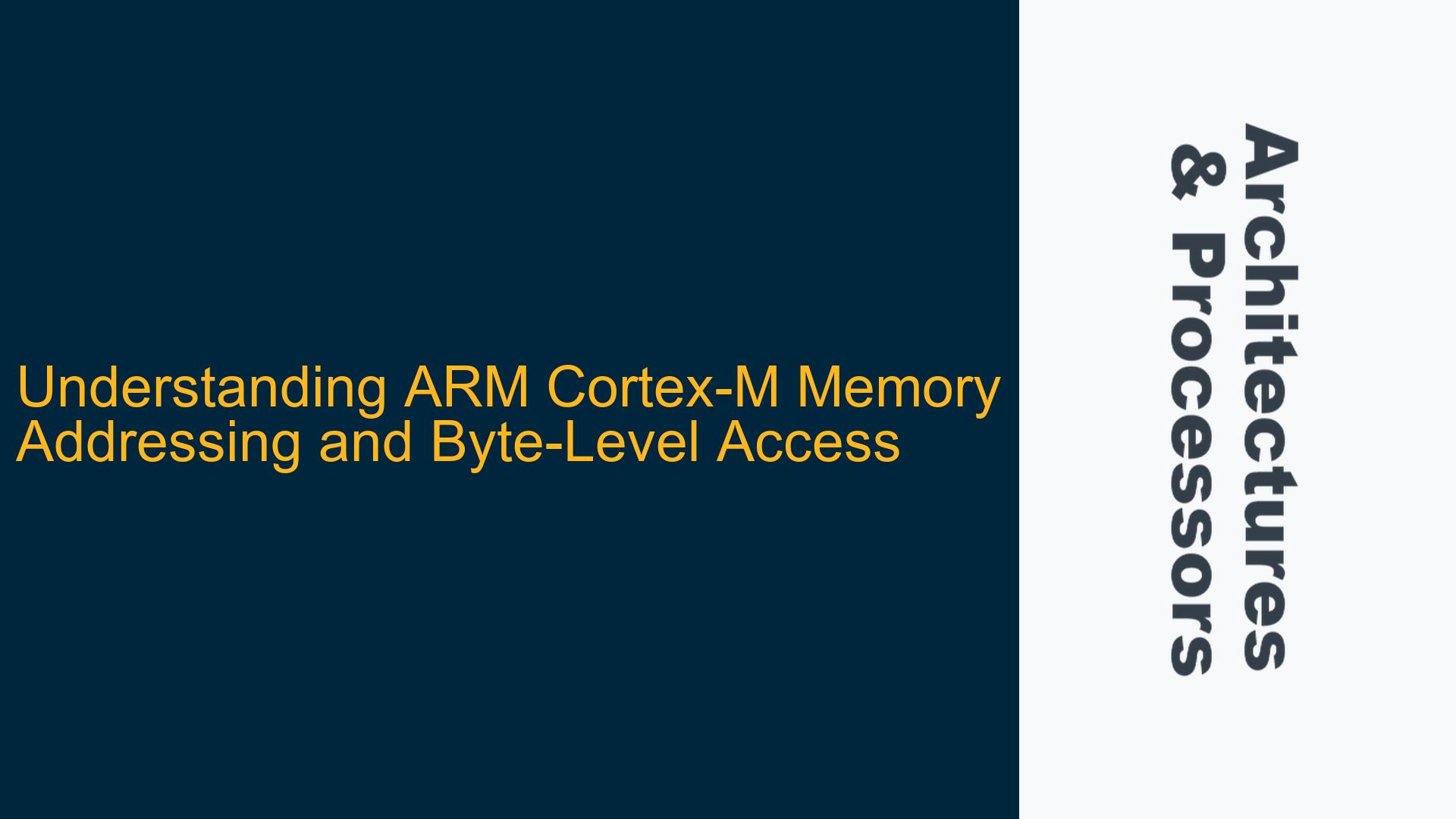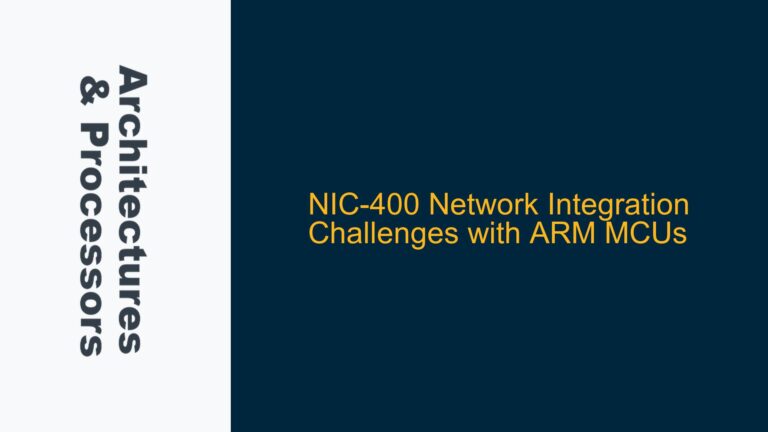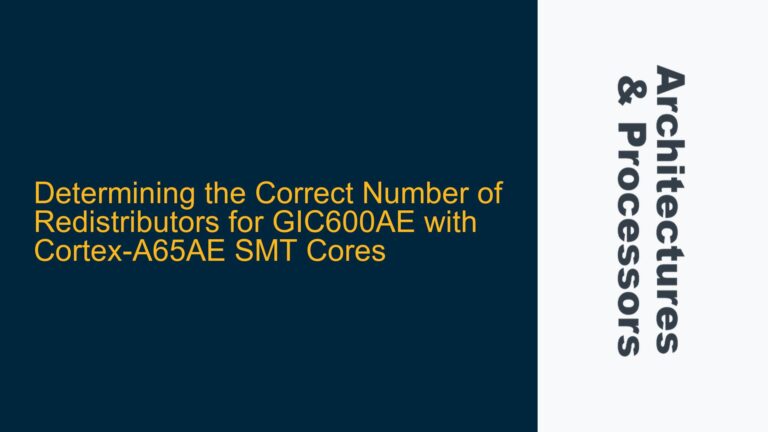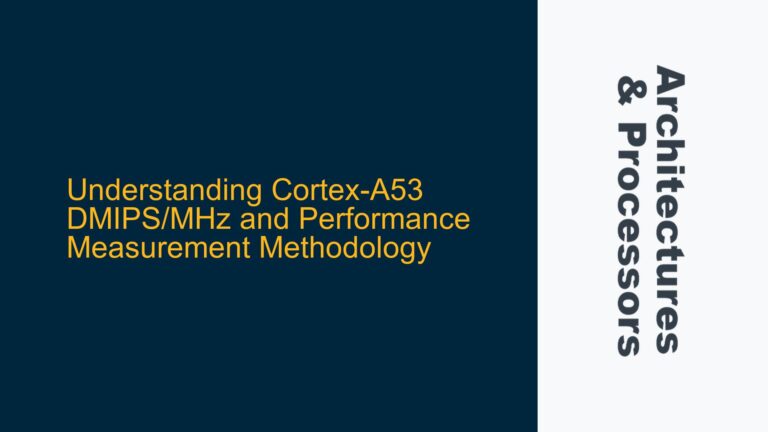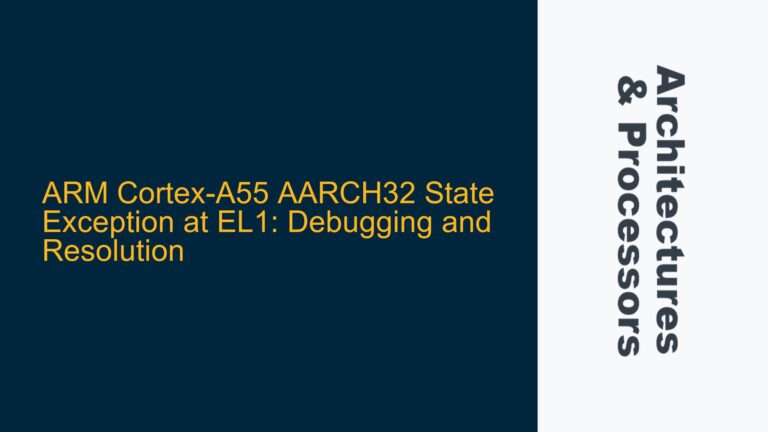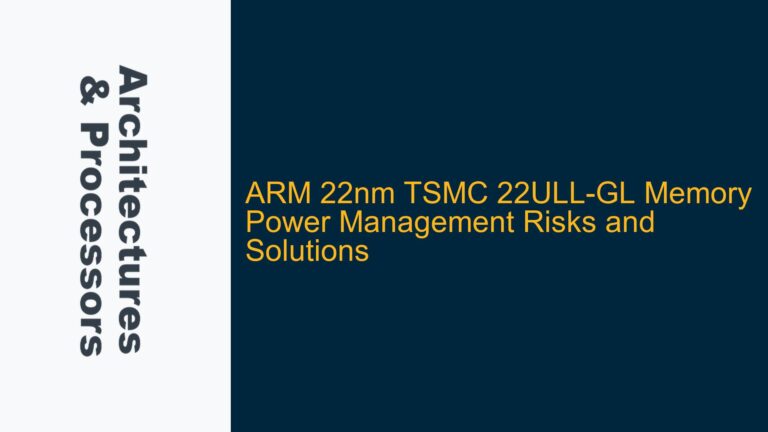ARM Cortex-M Memory Addressing: Hardware vs. Software Perspectives
In ARM Cortex-M architectures, memory addressing is a critical aspect that bridges the gap between hardware design and software implementation. The Cortex-M series, being based on a 32-bit architecture, employs a byte-addressable memory system. This means that each byte in memory has a unique address, even though the physical memory hardware might be organized in wider words, such as 32-bit (4-byte) chunks. This duality between hardware and software addressing can lead to confusion, especially when dealing with low-level operations like accessing individual bytes within a 32-bit memory word.
From a hardware perspective, memory is often organized in 32-bit words to optimize data throughput and align with the processor’s native word size. Each 32-bit word corresponds to a single physical address, but within that word, individual bytes can be accessed using specific byte-select signals. These signals are generated internally by the memory controller or bus interface unit, based on the lower bits of the address provided by the CPU. For example, if the CPU requests access to address 0x00000003, the memory controller will interpret this as accessing the third byte within the 32-bit word located at address 0x00000000.
From a software perspective, the memory appears as a continuous byte-addressable space. When a programmer declares a variable in C, such as a char, the compiler assigns a unique address to each byte. This address is used by the software to read or write data, but the underlying hardware translates this byte address into a word address and a byte-select signal. This translation is transparent to the programmer, but understanding it is crucial for debugging and optimizing low-level code.
The ARM Cortex-M architecture provides several mechanisms to handle byte-level access efficiently. The memory protection unit (MPU) and the bus interface unit (BIU) work together to ensure that byte-level accesses are handled correctly, even when the memory is organized in 32-bit words. Additionally, the Cortex-M series supports unaligned memory accesses, which allows the processor to access data that is not aligned to natural word boundaries. This feature is particularly useful when dealing with packed data structures or when interfacing with peripherals that require byte-level access.
Memory Controller Signals and Byte-Select Mechanisms
When the ARM Cortex-M processor accesses memory, it generates a 32-bit address that is passed to the memory controller. The memory controller then decodes this address to determine the physical memory location and the specific byte within that location. The lower two bits of the address (bits 1:0) are used to generate byte-select signals, which indicate which byte within the 32-bit word should be accessed. These signals are typically labeled as BE0, BE1, BE2, and BE3, corresponding to bytes 0, 1, 2, and 3 within the word.
For example, if the processor generates an address with the lower two bits set to 0b11 (binary), the memory controller will activate the BE3 signal, indicating that the third byte within the 32-bit word should be accessed. The memory controller then uses these byte-select signals to control the data bus, ensuring that only the requested byte is read or written. This mechanism allows the processor to access individual bytes within a 32-bit word without affecting the other bytes in the same word.
In addition to byte-select signals, the memory controller also generates other control signals, such as read/write enable, chip select, and address strobe. These signals are used to coordinate the memory access operation and ensure that the correct data is transferred between the processor and the memory. The timing of these signals is critical, as any deviation from the specified timing parameters can result in data corruption or access failures.
The ARM Cortex-M architecture also includes a write buffer, which allows the processor to continue executing instructions while the memory controller completes the write operation. This feature improves performance by reducing the latency associated with memory writes, but it also introduces potential issues with memory coherency. To address this, the Cortex-M series provides memory barrier instructions, which ensure that all pending memory operations are completed before proceeding to the next instruction. These instructions are particularly important when dealing with shared memory or when implementing synchronization mechanisms in multi-threaded applications.
Troubleshooting Byte-Level Access Issues in ARM Cortex-M Systems
When working with ARM Cortex-M systems, it is not uncommon to encounter issues related to byte-level memory access. These issues can manifest as data corruption, unexpected behavior, or even system crashes. To diagnose and resolve these issues, it is important to understand the underlying mechanisms and to follow a systematic troubleshooting approach.
One common issue is the misalignment of data structures. In C, data structures are often packed to minimize memory usage, but this can result in unaligned memory accesses. While the Cortex-M series supports unaligned accesses, they can be slower and may cause issues with certain peripherals or memory types. To avoid this, it is recommended to align data structures to natural word boundaries whenever possible. This can be achieved using compiler-specific attributes or pragmas, such as __attribute__((aligned(4))) in GCC.
Another potential issue is the incorrect use of volatile qualifiers. In embedded systems, the volatile keyword is used to indicate that a variable may change at any time, outside the control of the program. This is particularly important when dealing with memory-mapped peripherals or shared memory. However, improper use of volatile can lead to performance degradation or unexpected behavior. To ensure correct usage, it is important to understand the memory model of the Cortex-M architecture and to use volatile only when necessary.
Memory coherency issues can also arise when dealing with DMA (Direct Memory Access) transfers or multi-core systems. In these cases, it is important to ensure that all memory operations are properly synchronized. The Cortex-M series provides several mechanisms for this, including memory barrier instructions and cache management operations. When using DMA, it is important to invalidate or clean the cache as needed to ensure that the DMA controller accesses the correct data. This can be done using the SCB_CleanInvalidateDCache function or similar functions provided by the CMSIS (Cortex Microcontroller Software Interface Standard).
In some cases, the issue may be related to the memory controller configuration. The Cortex-M series allows for flexible memory controller configurations, but this flexibility can also lead to misconfigurations. For example, if the memory controller is configured to use a different bus width than the memory device, it can result in data corruption or access failures. To resolve this, it is important to carefully review the memory controller configuration and ensure that it matches the specifications of the memory device.
Finally, it is important to consider the impact of compiler optimizations. Modern compilers are highly optimized and can generate code that is both fast and efficient. However, these optimizations can sometimes lead to unexpected behavior, especially when dealing with low-level memory access. To diagnose issues related to compiler optimizations, it is recommended to disable optimizations temporarily and to use debugging tools to inspect the generated code. This can help identify any discrepancies between the expected and actual behavior.
In conclusion, understanding the memory addressing and byte-level access mechanisms in ARM Cortex-M systems is crucial for developing reliable and efficient embedded applications. By following a systematic troubleshooting approach and leveraging the tools and features provided by the Cortex-M architecture, developers can diagnose and resolve issues related to memory access, ensuring that their applications perform as expected.
